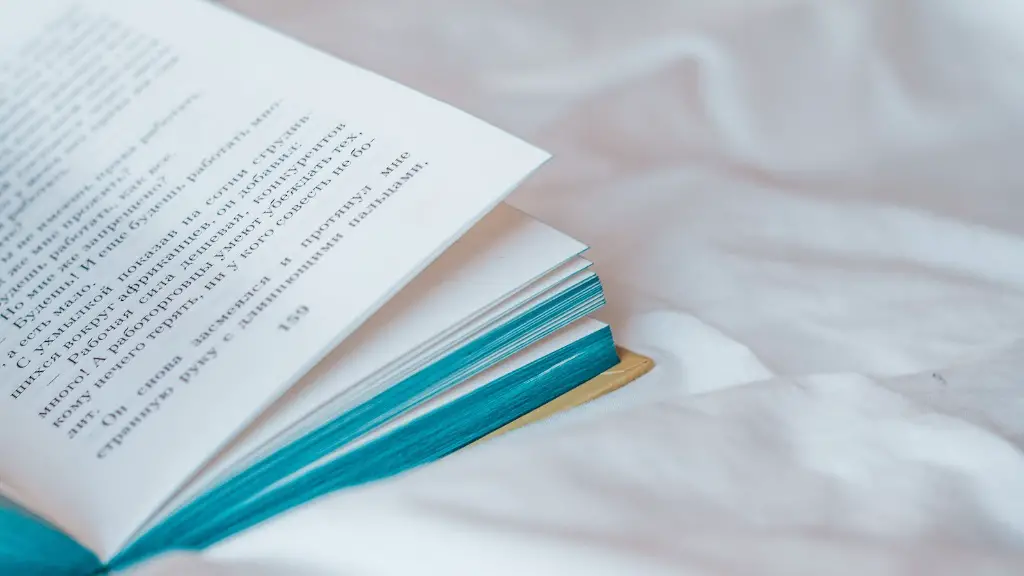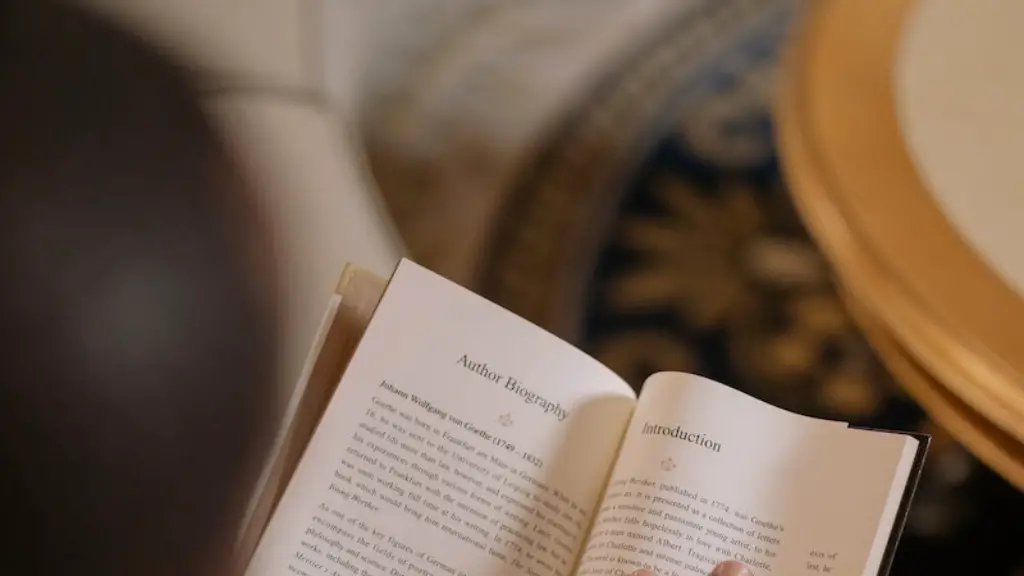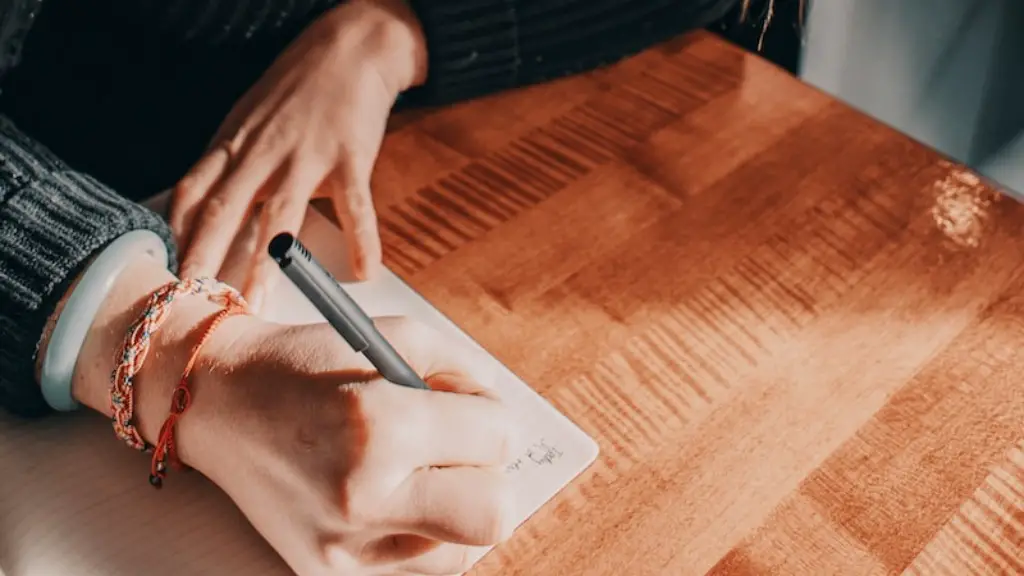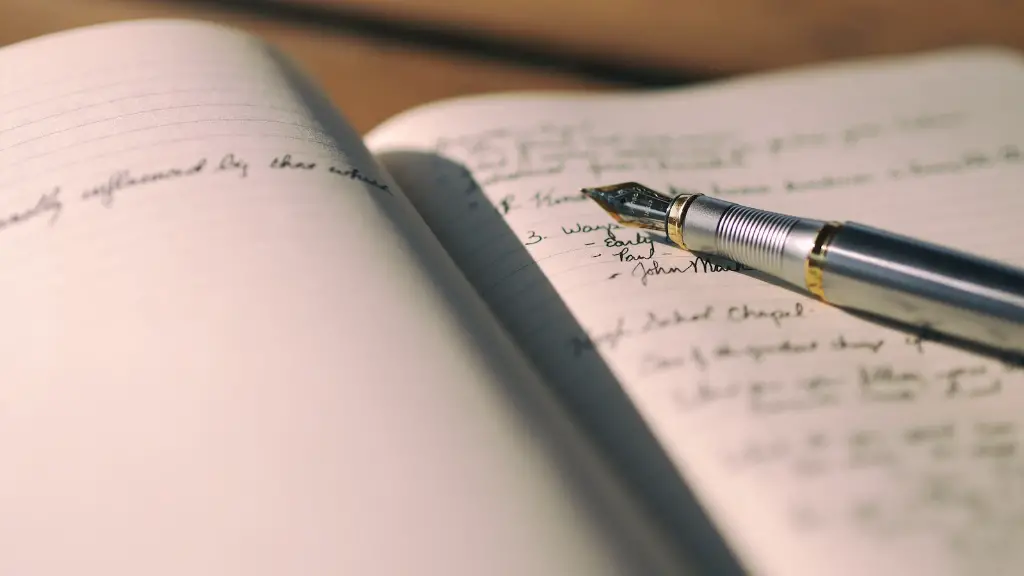From iambic pentameter to metaphor, poetry is filled with interesting words and concepts. It can be intimidating to learn the poetic terms, but with patience and dedication, anyone can gain an understanding of these terms. Here are some of the most important and commonly used concepts in poetry.
Rhythm and Meter
Rhythm is the most basic element of poetry, formed by the arrangement of words and phrases. Meter is the organization of a pattern of stressed and unstressed syllables into lines and stanzas. It is often referred to as feet, which represent the sequence of syllables. The names of these feet indicate the number of syllables included in the meter.
The most common type of meter is iambic pentameter. It is a series of five iambs, which consist of an unstressed syllable followed by a stressed syllable, and together create five two syllable feet. This is by far the most popular meter for poets to write and read, but there are many alternative feet, including dactyls, anapests, trochees, and spondees.
Rhyme and Rhyme Schemes
Rhyme is the repetition of a sound, usually found at the end of a line. It is used in poetry to emphasize the meaning of words and to make them easier to remember. The rhyme scheme is the pattern of rhymes used in a poem, usually stating the letter of the line that rhyme with each other. The most common rhyme scheme is the AABB, meaning the first and third lines rhyme, and the second and fourth lines rhyme.
Figurative Language
Figurative language is a term often used to describe the use of words to create imagery and vivid descriptions, often implying a deeper meaning. It is used to convey a concept or idea in a decorative and interesting way. One example of figurative language would be a metaphor, which is a comparison of two unlike things. An example of this would be “he’s a dancing star” to describe someone who loves to dance.
Another common type of figurative language is a simile, which also compares two unlike things but is more direct. An example of a simile could be, “He runs like the wind” to describe how fast someone is running. Personification is a form of figurative language where an object is given human-like qualities. For example, “the waves whispered secrets” implies that the waves were speaking, even though they are not a living thing.
Imagery
Imagery is the use of vivid and descriptive words to evoke a strong mental image in the reader’s mind. Imagery is essential for depicting the scene of a poem, and can be used to create emotions, moods, and atmosphere in a poem. It can be used to describe a person, an object, a place or an emotion with great accuracy, allowing the reader to imagine what is happening in the poem. Common imagery in poetry includes sight, sound, smell, taste and touch.
Stanzas
Stanzas are the building blocks of poems. It is a group of lines in a poem, usually separated by a blank line or an indentation. Each stanza has a set pattern of rhyme and meter, although not all poems use a consistent rhyme and meter pattern. Stanzas can contain two lines, called a couplet, or four lines, called a quatrain. There are many variations of stanza patterns, including the terza rima, which consists of three lines and is often used by Italian poets.
Other Terms
There are other poetic devices which are often used by poets and readers alike. These include symbolism, alliteration, onomatopoeia and assonance. Symbolism is the use of symbols and imagery to represent something else, often an idea or emotion. Alliteration is the repetition of a sound such as a consonant, or a group of consonants, at the beginning of words. Onomatopoeia refers to words that imitate sounds, such as “buzz” and “whirr”, while assonance is the repetition of a vowel sound.
Analysis in Poetry
To fully understand and appreciate a poem, it’s important to analyze it in terms of its content, structure, and form. Content should be analyzed in terms of the poem’s purpose and its meaning. Structure can be looked at in terms of the poem’s stanzas, rhyme and meter, and imagery. Similarly, form can be examined in terms of the tone, diction, and allusions used in the poem.
Optical Devices in Poetry
Optical devices are used to make the text more visually appealing and easier to understand. These can include typography, alphabets, margins, spacing, and other layout devices. Typography involves changing the font size and spacing of the text to make it easier to read, while alphabets are used to create images or shapes within the text. Margins and spacing are used to create a visual balance between the text and the image, while other layout devices are used to make the text easier to see at a single glance.
Exploration of Metaphors
Metaphors are a powerful poetic device which allow poets to use comparisons to convey an abstract concept. By exploring different metaphors, a poet can bring emotion, depth and perspective to a poem. Metaphorical language can describe abstract concepts in a physical, concrete way, making them more accessible and easier to understand. It can also create vivid and engaging descriptions and allow the reader to draw connections between the subject and the metaphor.
Comparisons and Contrasts
Comparisons and contrasts are another important element of poetry. They allow poets to draw contrasts between two ideas or concepts, allowing the poet to explore the differences between the two and create a unique contrast. It can also emphasize the similarities between two ideas or concepts, allowing the poet to explore both in depth. Comparisons and contrasts are an effective way to convey a concept or emotion in a single image or idea.



